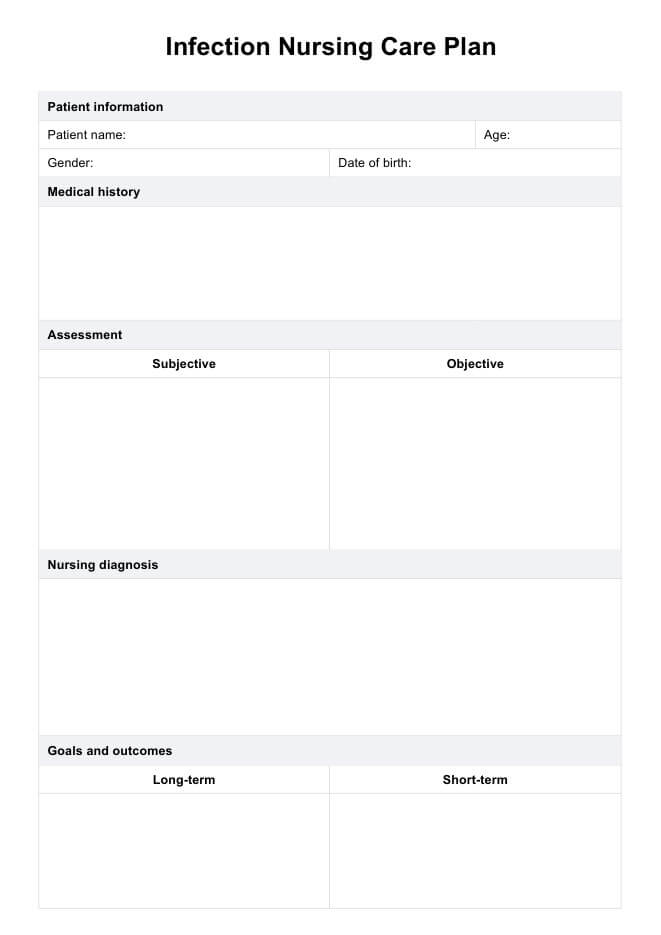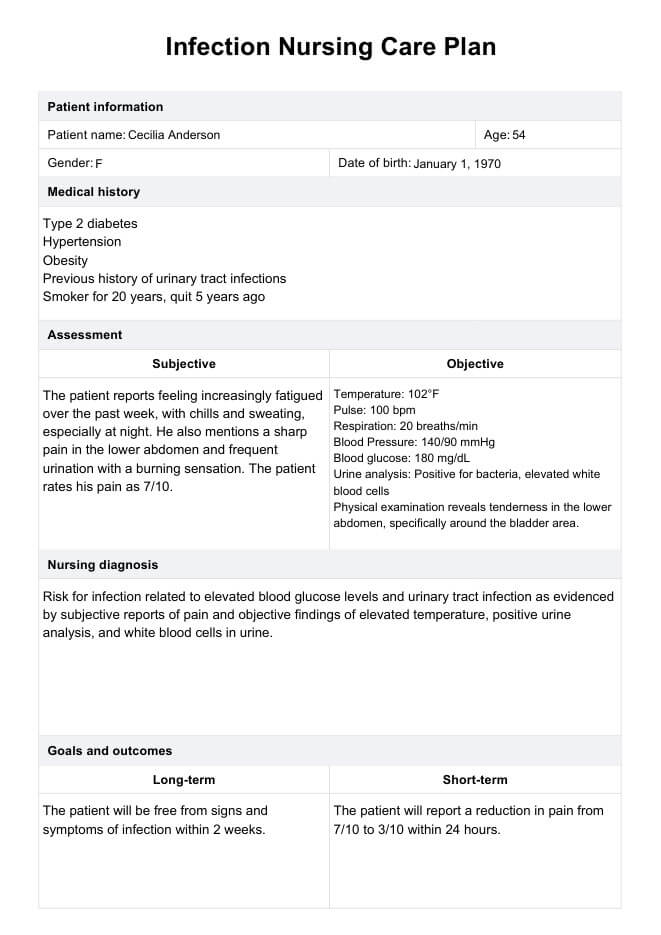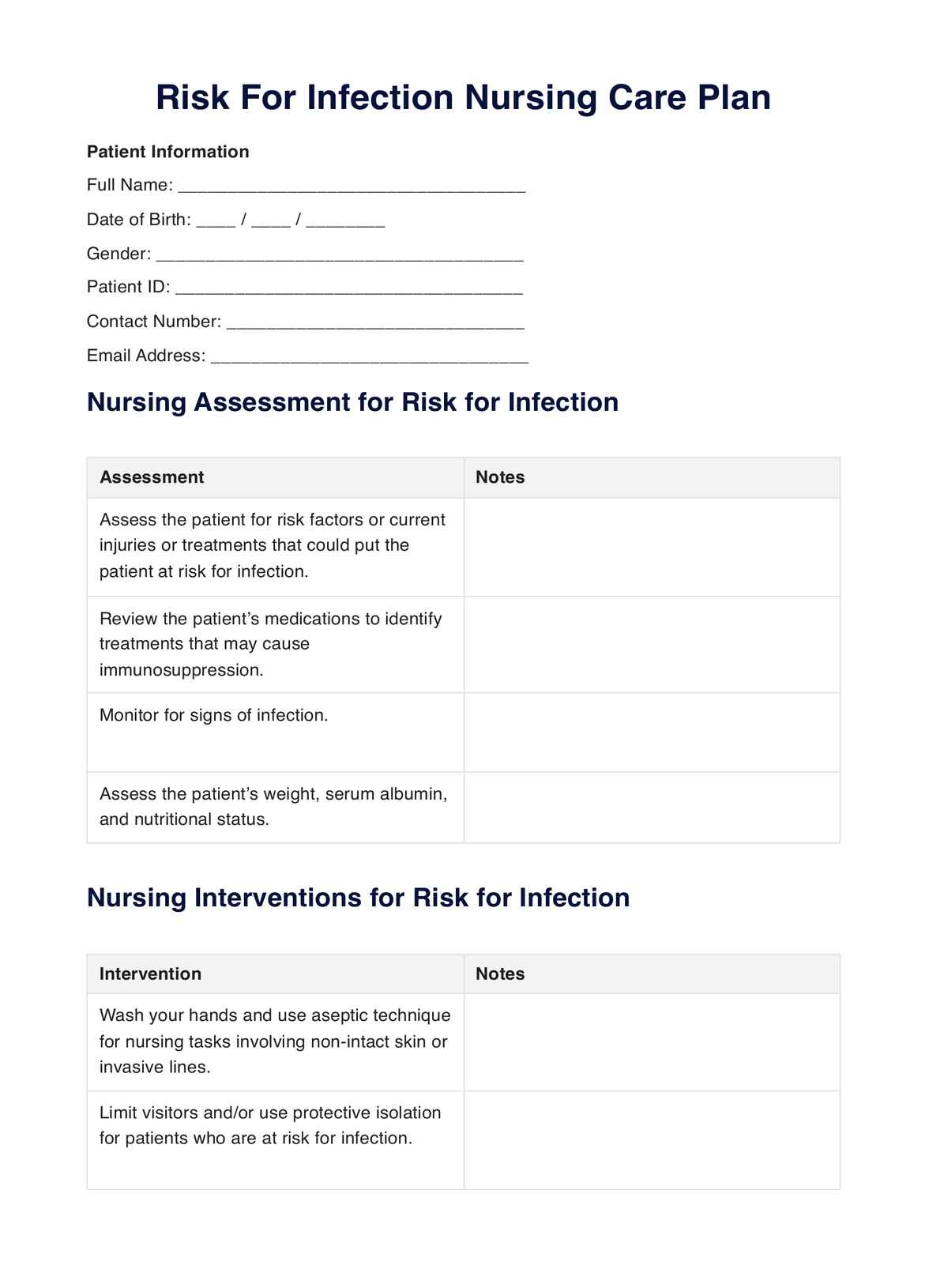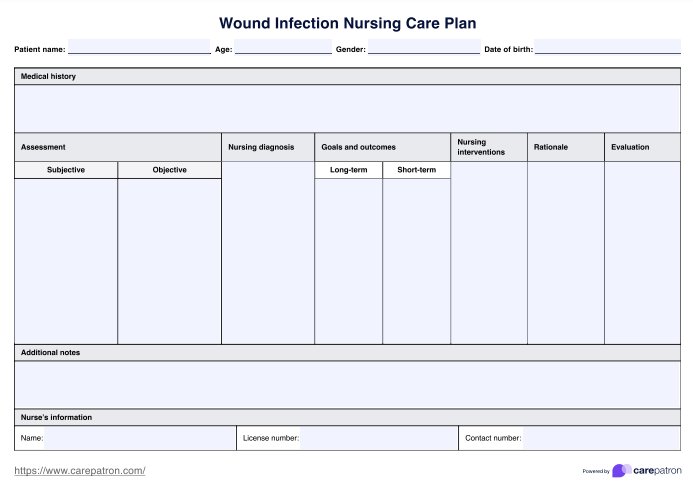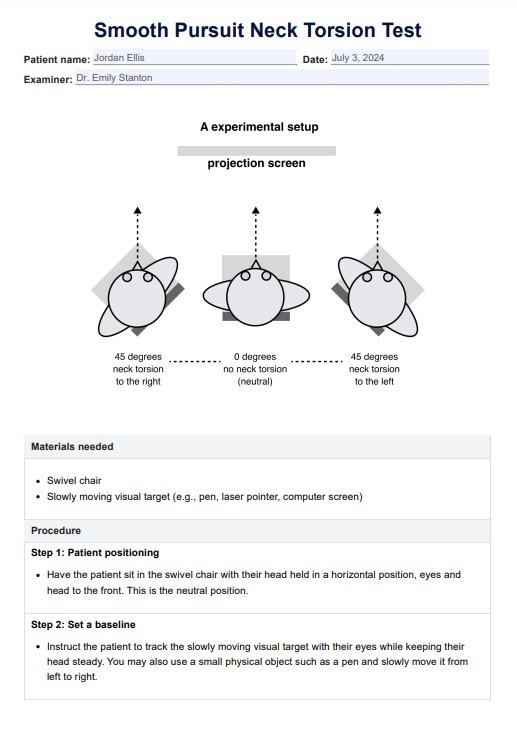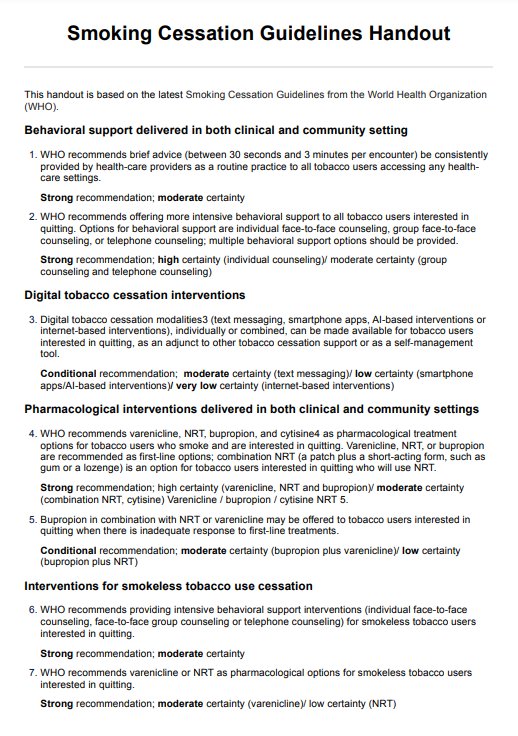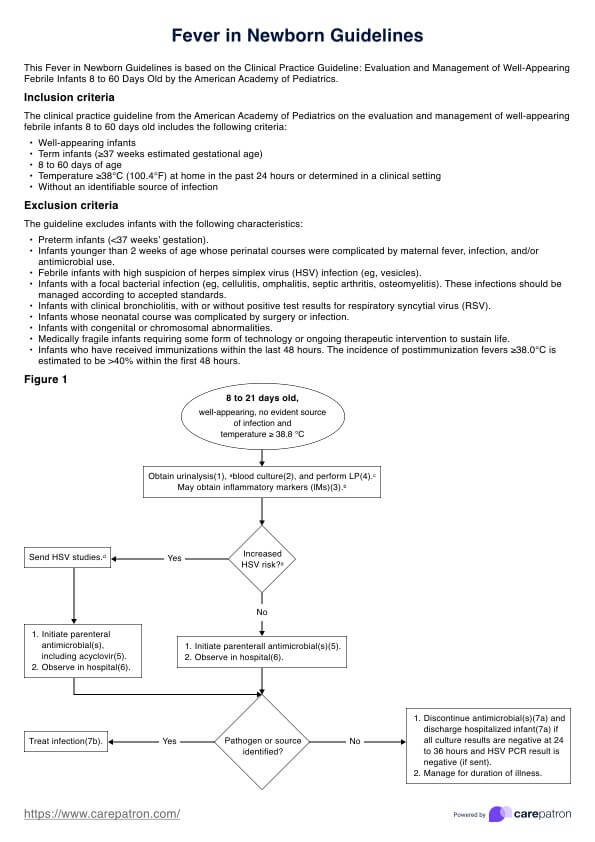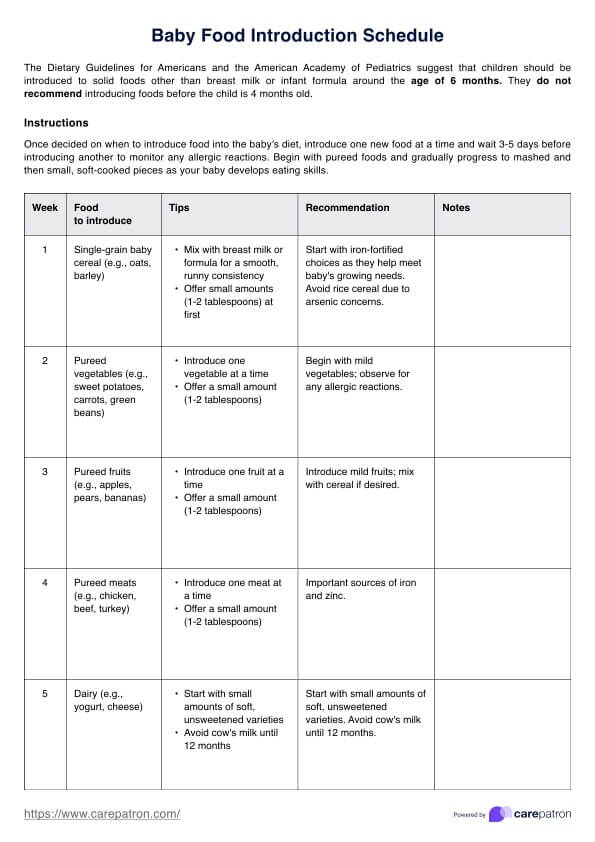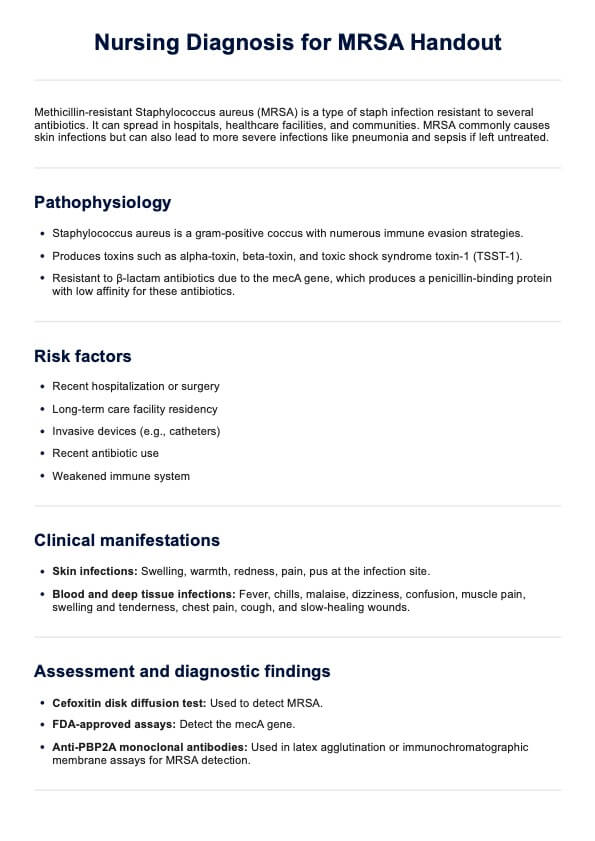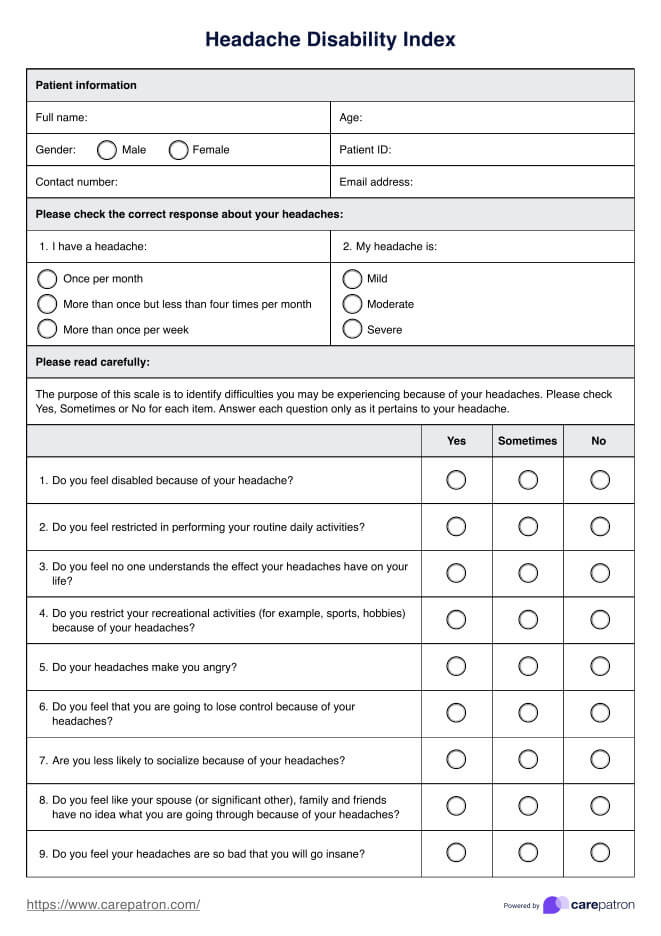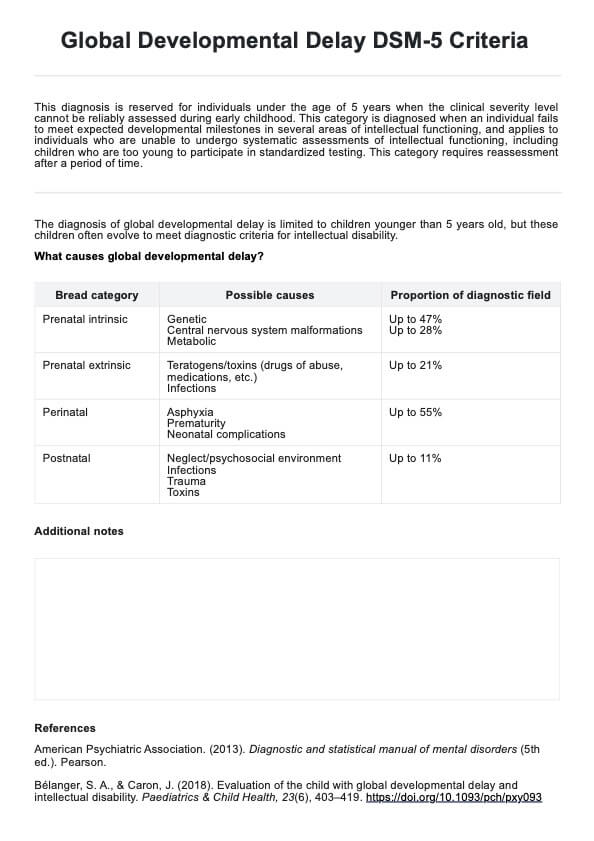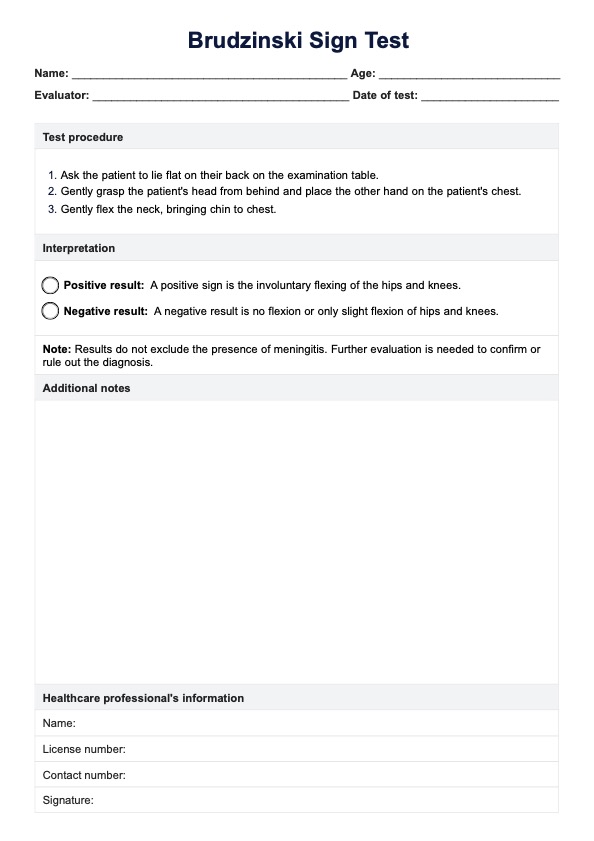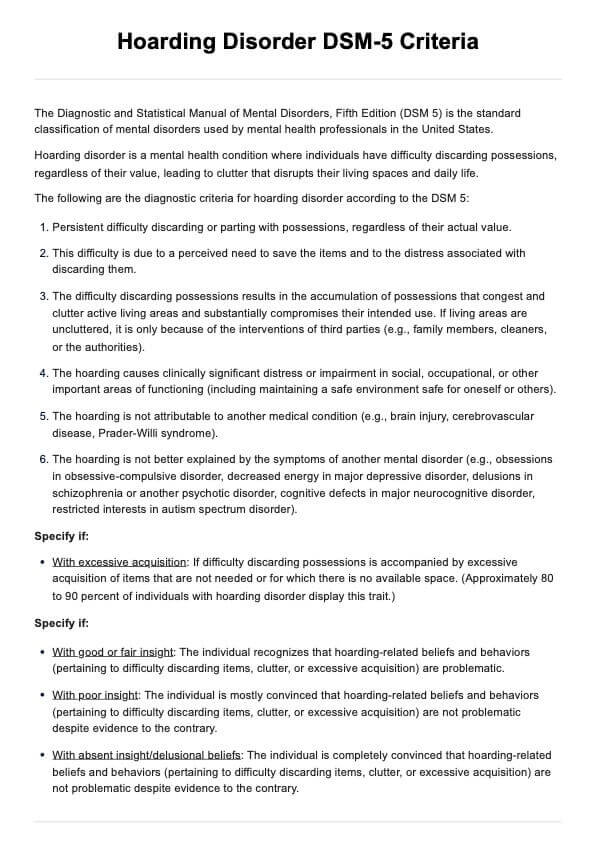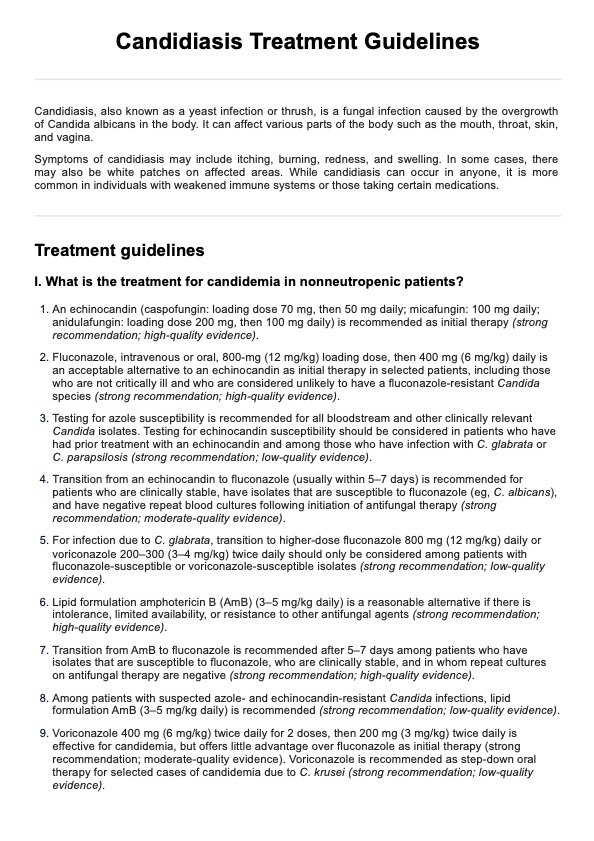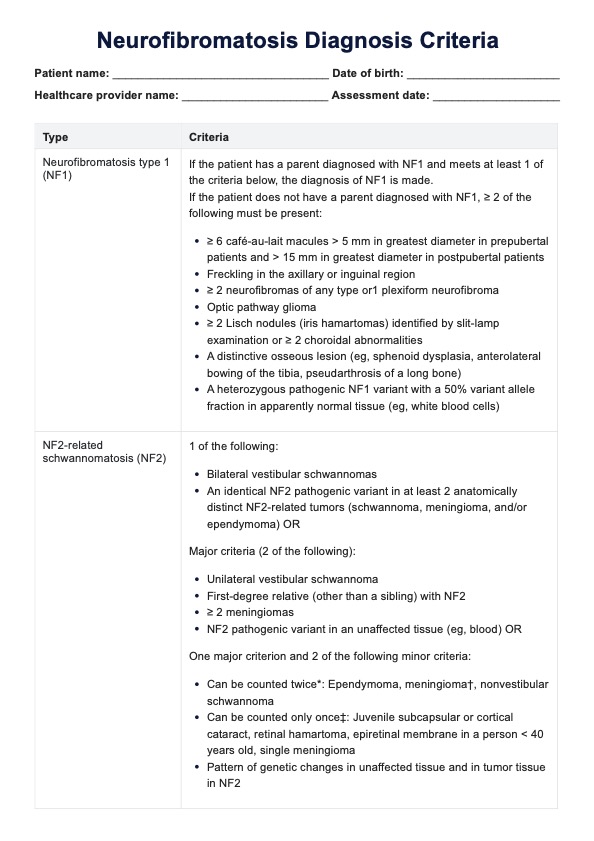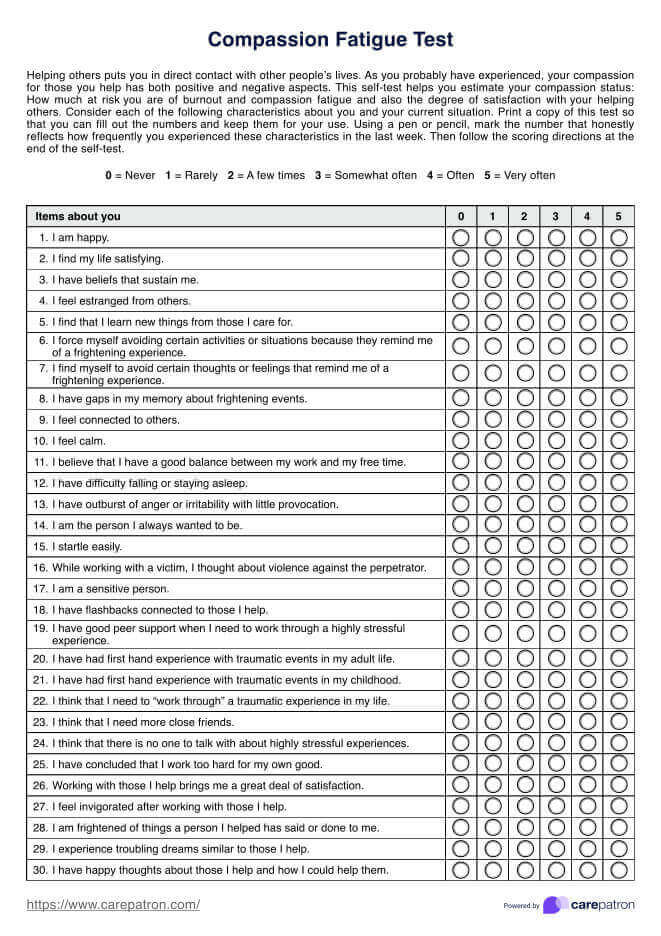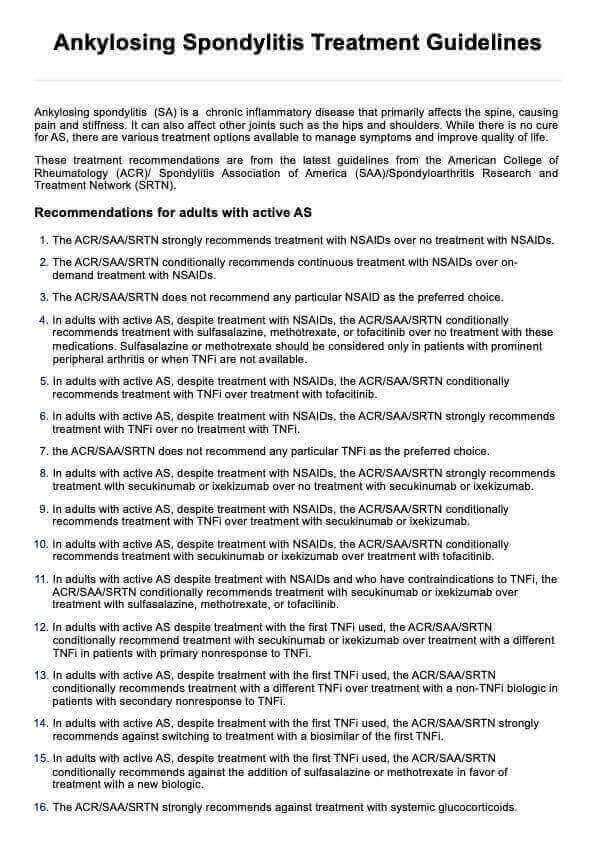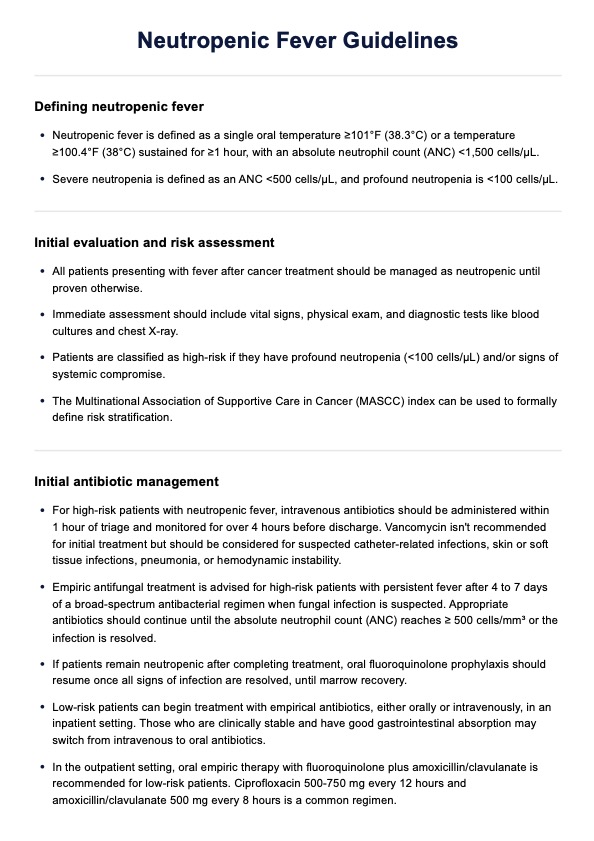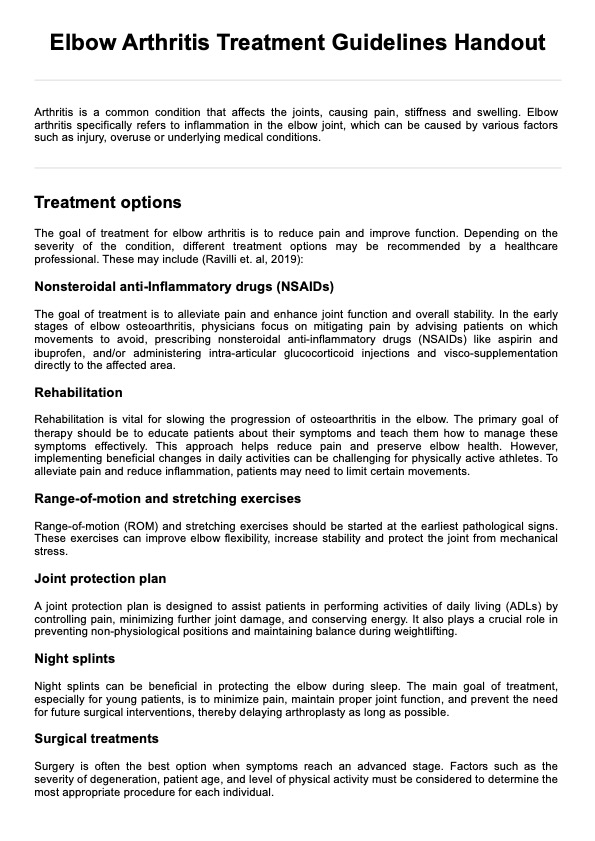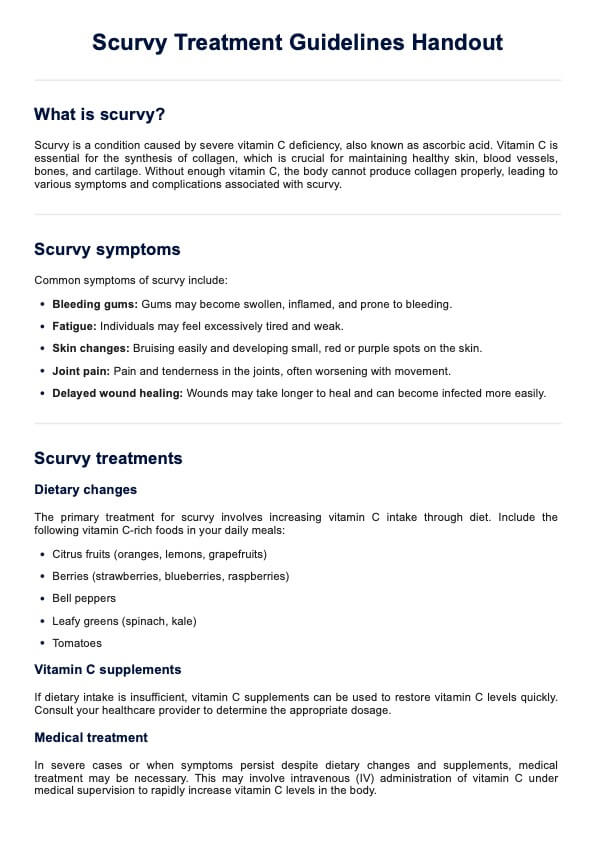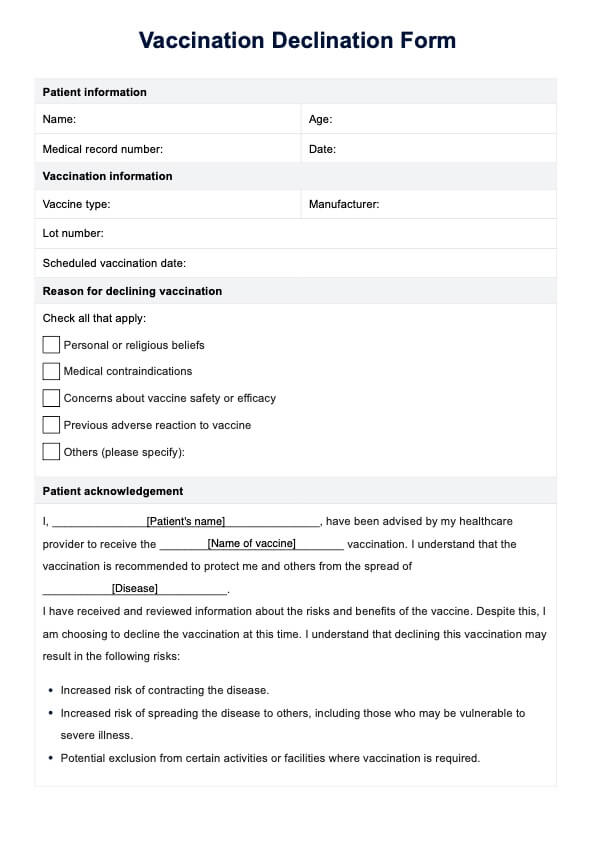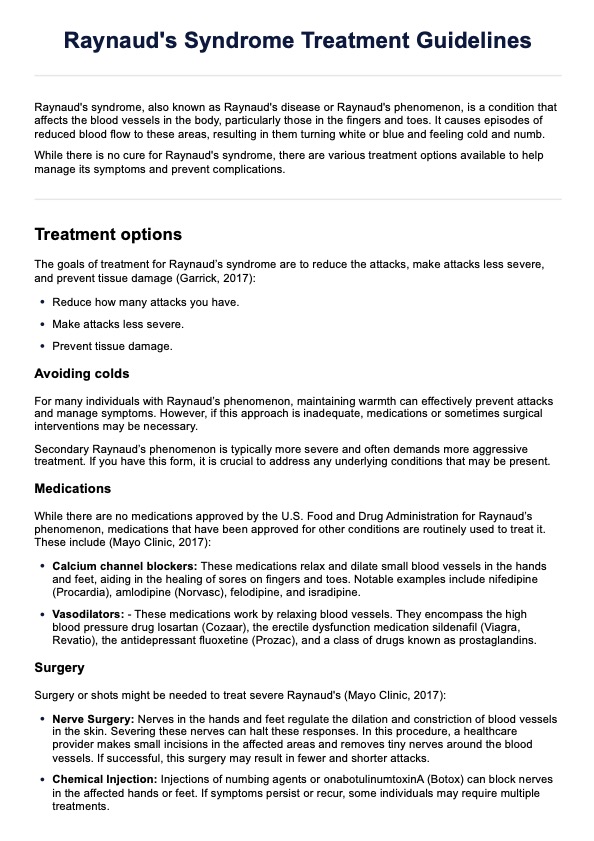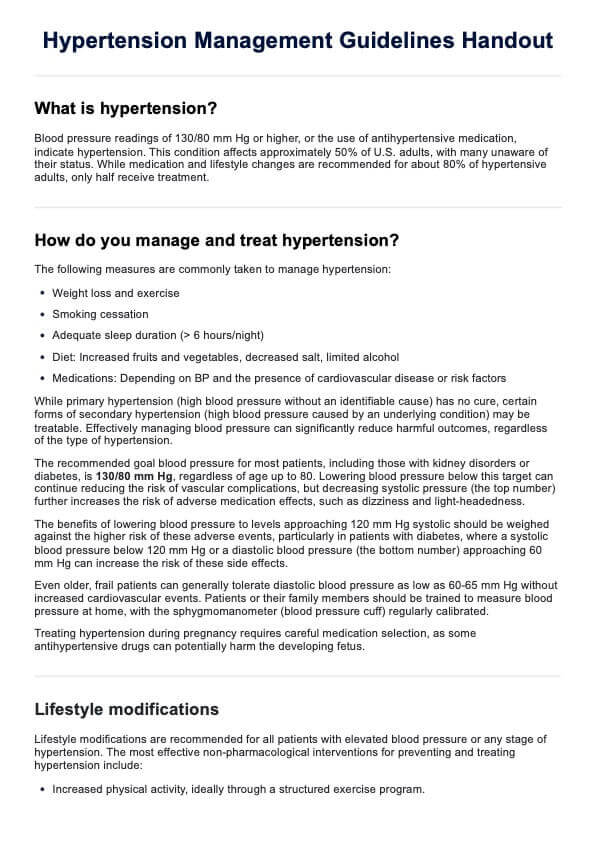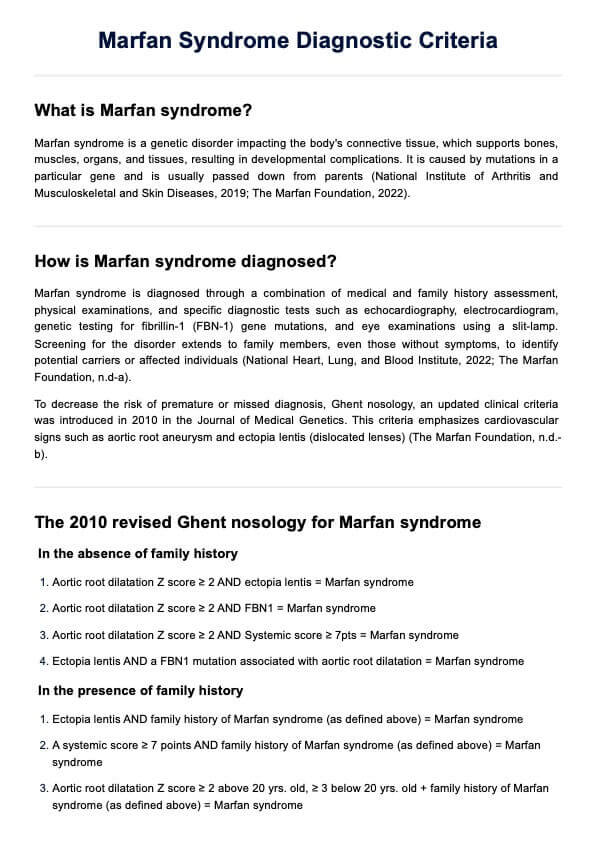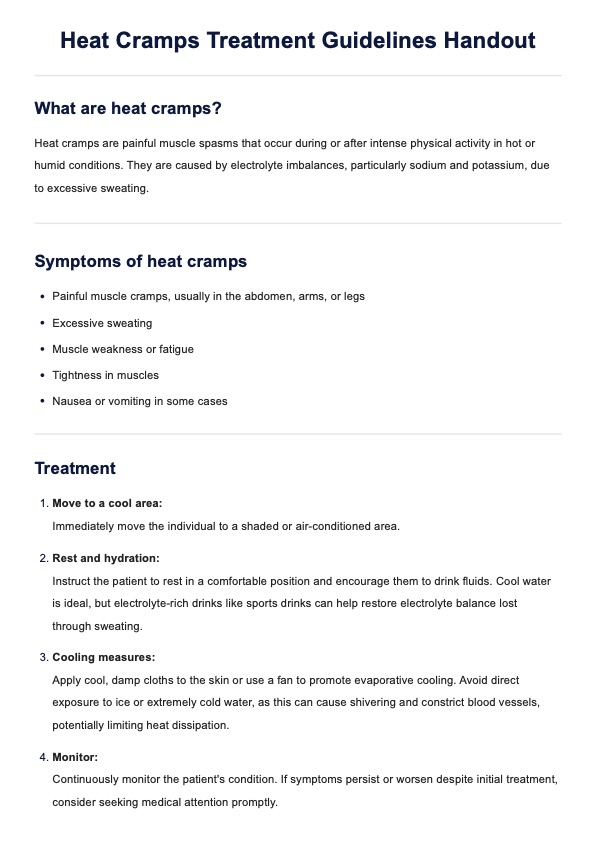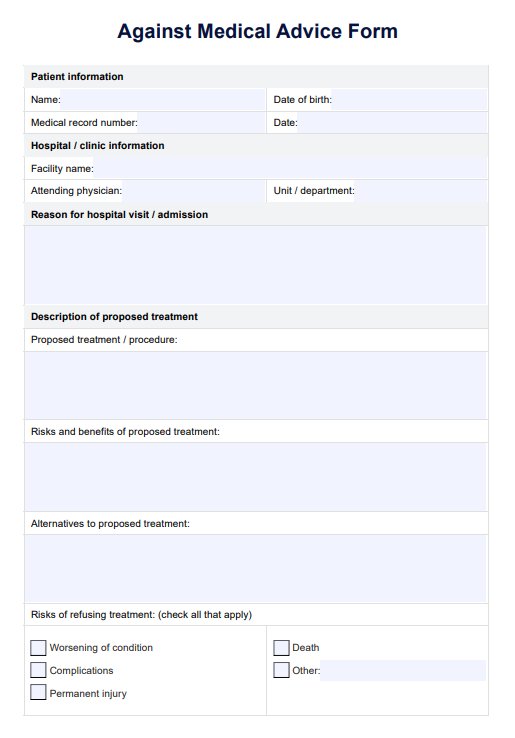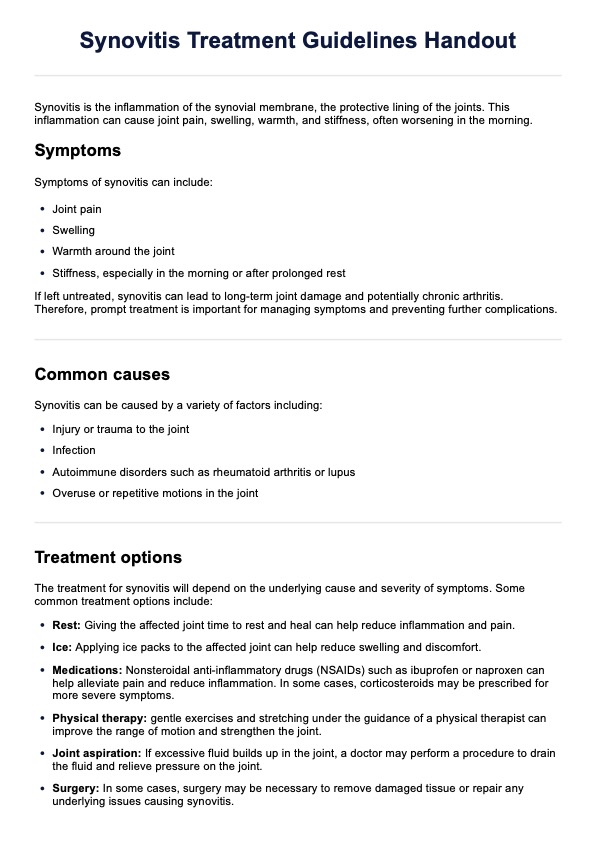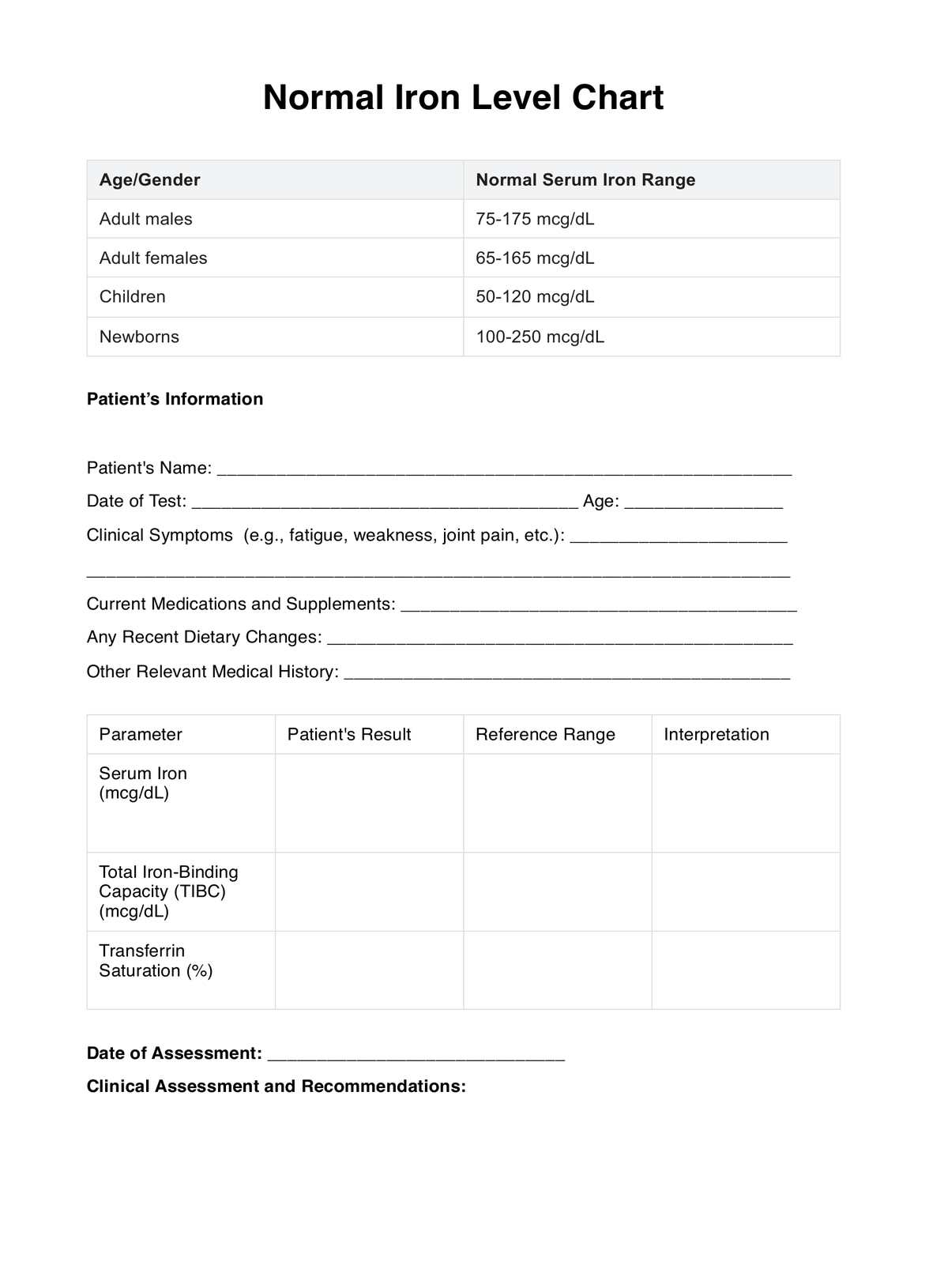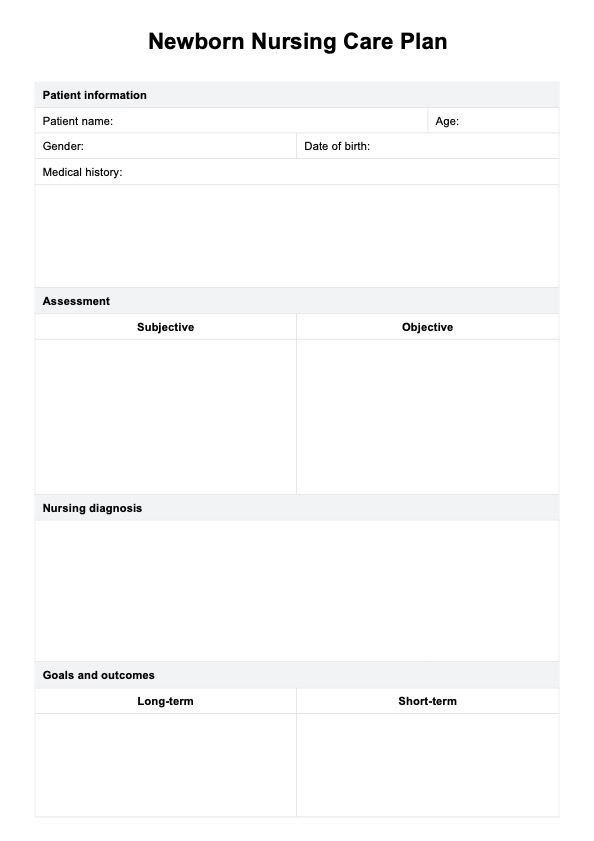Infection Nursing Care Plan
Streamline patient care with our Infection Nursing Care Plan Template - a comprehensive, effective infection management and recovery tool.


What is an Infection Nursing Care Plan Template?
An Infection Nursing Care Plan Template is a document that helps outline nursing assessments, diagnoses, nursing interventions, rationale, and goals for the care of patients with an infection. It guides nurses to provide comprehensive and individualized care to patients based on their specific needs and conditions.
Infection nursing care plans are crucial in providing quality care to patients with infections. These plans help nurses identify the patient's health status, potential risks, and appropriate interventions to prevent or manage infections effectively. They also serve as a reference tool for healthcare providers to monitor progress and make necessary adjustments in the plan of care.
Moreover, these care plans are designed to be dynamic and adaptable, taking into consideration the patient's changing conditions and response to treatment. They also promote collaboration among healthcare team members, including doctors, pharmacists, and other specialists involved in the patient's care.
Infection Nursing Care Plan Template
Infection Nursing Care Plan Example
How does this work?
Our printable Infection Nursing Care Plan Template is a practical tool that streamlines the process of managing patient care for infections. Here's how to use the template:
Step 1: Get a copy of the template
Access the free PDF Infection Nursing Care Plan Template by clicking the "Use Template" button. To download a copy of the PDF version, simply click the "Download" button. Additionally, you can get a copy via the Carepatron app. We also have a Risk for Infection Nursing Care Plan Template you can use to manage infection risk.
Step 2: Assess the patient
Conduct a thorough assessment of the patient, including their medical history, current symptoms, and vital signs. This will help identify potential infection risks and determine the current infection's severity.
Step 3: Fill in the template
Using the information gathered from the assessment, fill in the relevant sections of the template. Make sure to include all necessary details, such as the patient's name, date of birth, and specific infection.
Step 4: Identify goals and interventions
Based on the assessment findings, identify specific goals and interventions to prevent or manage the infection. This may include administering medication, implementing isolation precautions, or providing education to the patient on proper hygiene practices.
Step 5: Write your rationale and evaluation
Provide a rationale for each intervention and document the expected outcomes. This will help track progress and evaluate the effectiveness of the interventions.
Step 6: Review and update regularly
The care plan should be reviewed and updated regularly to reflect any changes in the patient's condition or response to treatment. It is essential to keep this care plan current for optimal patient care.
When would you use this template?
The Infection Nursing Care Plan Template is especially beneficial for patients with compromised immune systems, those with surgical wounds, individuals with invasive devices like catheters, or patients suffering from chronic diseases that make them more susceptible to infections. It is also invaluable during outbreaks of infectious diseases, where the risk of infection spread is high.
Healthcare professionals can also utilize this template to manage existing infections and as a preventive measure in high-risk scenarios. By systematically assessing risk factors and implementing targeted interventions, the template helps in significantly reducing the likelihood of infection development.
Moreover, the Infection Nursing Care Plan Template is a key resource for nurses and healthcare providers. It guides them in delivering structured, evidence-based care to patients at risk of or suffering from infections, enhancing patient outcomes and contributing to overall infection control in healthcare settings.
Components of an effective infection nursing care plan
When addressing a specific condition such as a respiratory tract infection, urinary tract infection, or surgical site infection, an Infection Nursing Care Plan Template can be used as a guide to identify interventions and monitor the patient's response.
Here are the components of an effective infection nursing care plan:
Assessment
This is the first step in developing a care plan and involves gathering information about the patient's current health status, including any existing infections or the patient's specific risk factors for infections. It also includes assessing the patient's immune system function, white blood cell count, mucous membranes, and other relevant systems.
Nursing diagnosis
Based on the assessment findings, specific nursing diagnoses related to infection can be identified. Some common nursing diagnoses related to infection may include risk for infection, impaired skin integrity, altered oral mucous membrane, and ineffective breathing patterns. The diagnosis should also specify if the condition is due to wound infection, respiratory infections, and other serious infections.
Goals and outcomes
Setting specific, measurable, attainable, and time-bound (SMART) goals is crucial in guiding care plans, especially for patients at risk of bacterial infections, including respiratory and urinary tract infections. It's important to identify desired outcomes to assess the effectiveness of the care plan and make necessary adjustments.
Interventions
Interventions are actions taken by the nurse to prevent or manage infections. These may include administering antibiotics, providing wound care, maintaining proper hygiene practices, putting infection prevention measures in place, monitoring vital signs and symptoms, and educating the patient on infection prevention strategies. Additionally, implementing patient education as an intervention can play a vital role in managing various types of infection, especially healthcare-associated infections and systemic inflammatory response syndrome.
Rationale
The rationale for each intervention should be clearly stated to provide a scientific basis for the chosen actions. This helps ensure evidence-based practice and effective infection control measures. For example, administering antibiotics is based on the principles of microbial resistance and targeting specific bacteria causing the infection. Wound care interventions aim to promote healing and prevent further spread of infections.
Evaluation
Evaluation involves assessing if the desired outcomes have been achieved and if the interventions were effective in preventing or managing the infection. This step also provides an opportunity to identify any potential barriers to achieving desired outcomes and make necessary adjustments to the care plan.
Commonly asked questions
Infection is a common nursing diagnosis that refers to the presence and growth of pathogenic microorganisms in the body. It can lead to various signs and symptoms such as fever, inflammation, pain, and drainage from wounds or infected areas.
An example of an infection in nursing could be a patient with a surgical wound that becomes infected with bacteria, resulting in fever, redness, pain, and pus draining from the wound. Another example could be a patient with pneumonia, which is caused by a viral or bacterial infection in the lungs.
Common interventions for infections include administering antibiotics or antiviral medications to target the specific pathogen causing the infection, providing wound care and drainage for infected wounds, maintaining proper hand hygiene to prevent the spread of infection, and monitoring vital signs and symptoms closely to assess improvement or worsening of the infection.

.jpg)
